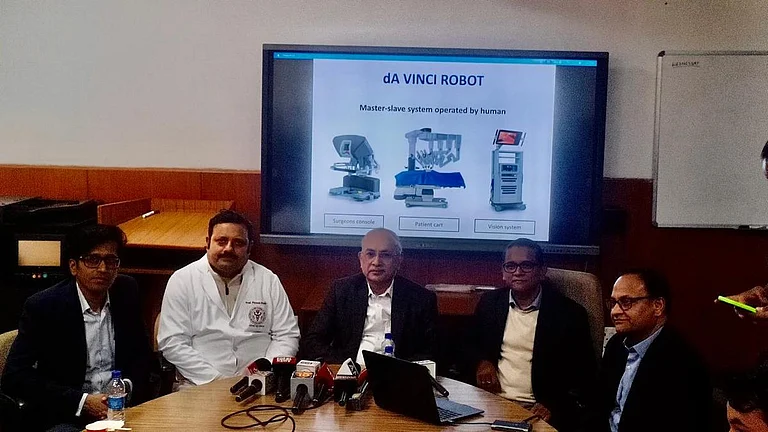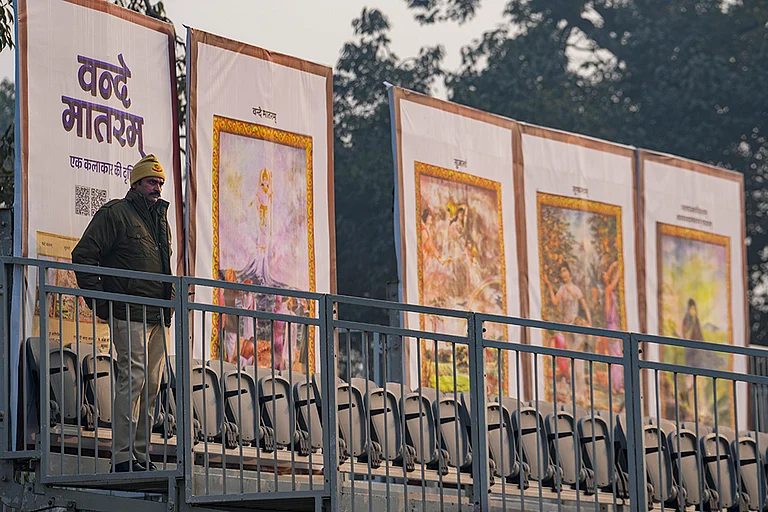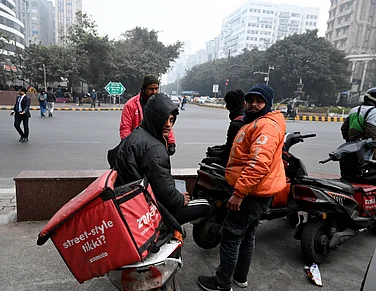Monsoons have been the perennial game-changer in India. And even our common non-resident Indian, who blames India’s heat and dust as a major factor prompting his departure to cooler climes, cannot but help think nostalgically of the monsoons back home, when those dark rumbling clouds assemble in the skies above like playful elephants (Vaprakreeda parintgaj prekshneeyam—Kalidasa), and down on Earth the trees begin to heave and sway with the eastern breeze, the famous purvaiya, that drives away all fatigue. Then and only then comes the sheer pleasure of the sights and sounds of rain falling down upon the parched Earth. Even a cynical saint like Kabir is moved:
Kabira badar prem ka hum par barasya aai,
Antar bheengi atma, hari bhai banrai…
(Says Kabir the clouds have rained and drenched to its core, my soul has turned a verdurous green).
Indian monsoons are made for music and merrymaking and mating, in that order. And, interestingly, the poetic history of our monsoons began long before its writing. The first compilers with pen and paper recorded their monsoon tales for us with the most primary material: word of mouth, mostly in poetry. There is no more beautiful body of folk songs and classical raga bandishes. Here is a popular Kajri song from eastern UP.
Sawan jhar laagila, dheere dheere,
Raja ji kholo chandan kiwadiya,
Boondan jhar lagin, ho dheere dheere.
(The monsoons are here, O’ my Raja ji, open your sandalwood doors and see how gently the first drops fall).
I have always believed, and continue to believe, that there is no better way to soak in the pleasures of monsoon than curling up on a comfortable bed with a good book in my hometown in the hills and hearing the rain create music upon the red tin roof. Ours is a mythical land where the sun seldom comes out during the long monsoons. As children, our schools did not close on days it rained heavily. We were given ‘sunny days’ off instead. When mothers got busy hauling enormous quantities of damp bed clothes out in the sun and everything outside suddenly acquired a fresh youthful air of women chatting over clotheslines and boisterous children running in between, celebrating a break.
Monsoon in the tropics means rejuvenation of life, when plant life begins to reappear everywhere around houses, often even inside through cracks. It rains in the cities, it rains in the fields, it rains in the lacustrine paradise of estuaries and crossings of holy rivers from Karanprayag to Calcutta. People walk through the first showers as if in a state of grace, munching freshly-roasted corn and gram and peanuts warmed up in sand. India acknowledges its rain gods by whose virtue the miracle happens each year. A rain song from Odisha goes like this…
Ram hela jal, Sita hela lahudi,/Ram hela megh, Sita hela ghadghadi..
(See Lord Ram turn into water and his consort Sita into a water xylophone, Ram becomes a cloud and Sita becomes his lightning!)
The poems about Indra, the archetypal Vedic god of rains, are pregnant with a long-hidden history of India. He was born of the Earth but sired by another great Vedic water god, Varuna, the giver of life to the tillers of soil and growers of crops. The generous father was destined to clash with son Indra, the ruthless wanderer (shades of the song, Awaara hoon?). While still young, Indra is said to have displayed hostility towards his father. In one particular face-off, it is said, he seized Varuna by his ankle and tackled him to the ground and killed him. Thereafter he proceeded to seize his dead father’s arms and his golden chariot in which he began wandering the earth with his loyal horsemen and pack of dogs. Those who recently objected to the presence of a dog at the Kedarnath Temple may kindly take note.
Let’s return to our great vengeful warrior leader, who was also now the controller of rains. When Indra entered the Indus River valley, the area was ruled by elitist oligarchies, and clans of priests. The oligarchs were constantly squabbling and waging wars against their neighbours, and the poor farmers—who allowed them to take care of security in exchange for taxes and other considerations—bore the brunt of this violence as a mostly marginalised group, prevented by the priests and rulers from participating in state rituals and sacrifices. Representing a popular resentment against the ruling families, one Dasa oligarch, Divodasa, got in touch with Indra. Divodasa also put Indra in touch with a valuable disgruntled engineer of the oligarchs Twashtra, the maker of weapons and brewer of the soma (wine). It was a friendship made in hell. Indra loved wine. And when he met Twashtra he just grabbed the special bowl of soma proffered to him and got his mitra Tvashtra to craft the ultimate weapon of mass destruction, the Vajra.
Armed with the Vajra, Indra successfully quelled his Dasa opponents. Then he did what power hungry autocrats do: he killed both Divodasa and Tvashtra thus kicking away the step ladder that had helped him climb up. But the monsoons saw to this ruthless warrior’s fall at the hands of the music and cattle-loving popular young cowherd Krishna. He it was who used the hills of Gokul to block the flooding of their fields by a revengeful Indra. And Krishna, with his consort Radha, has ever since been at the heart of monsoon poetry.
In the 18th century, Kajri singing was invented in the colourful city of Kashi, famous for its temples and tawaifs. By the 19th century, regular Kajri dangals (wrestling matches) were being held on decorated rafts upon the river Ganga between various gharanas of Kajri singers. The famous Budhwa Mangal festival of Kashi was held specifically during the monsoon months of sawan-bhadon for celebrating monsoons with Kajri and sawan. Raja Ishwari Narayan Singh was so pleased by the Kajri singing of one courtesan, Maina Bai—who sang through the night with her friend Husna Bai—that he gifted her the village of Koery as a reward. Mata Vindhya Vasini’s temple in Mirzapur produced another wonderful string of Kajri songs.
One rare Kajri by a courtesan Sundar, along with several other courtesans, commemorates her lost lover, a romantically-inclined policeman appointed by Raja Chet Singh. When Data Ram was jailed and sent to the Andamans (Kalapani) for having defied the British, Sundar wrote:
Are Rama Nagar naiya jalaa, kale paniyan Re Hari !
Gharva mein royein Nagar Bai re bahiniya Rama,
Sejiya pr rovein bari dhaniya re hari !
(Oh Ram, Oh Krishna, Nagar’s ship leaves for Kalapani. At home his mother and sisters weep and here we, the young lovers, weep on our empty beds O’ Hari !”)
Thus monsoon!
(Views expressed are personal)
(This appeared in the print edition as "Monsoon Melodies")
Mrinal Pande Is a journalist and author, and ex-chairperson, Prasar Bharati























